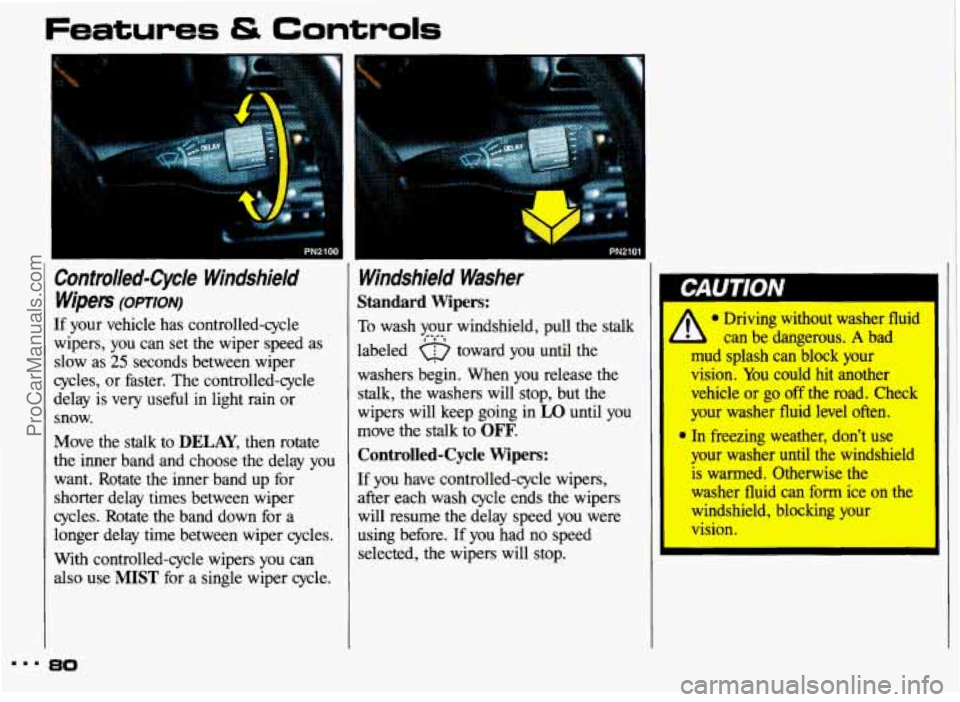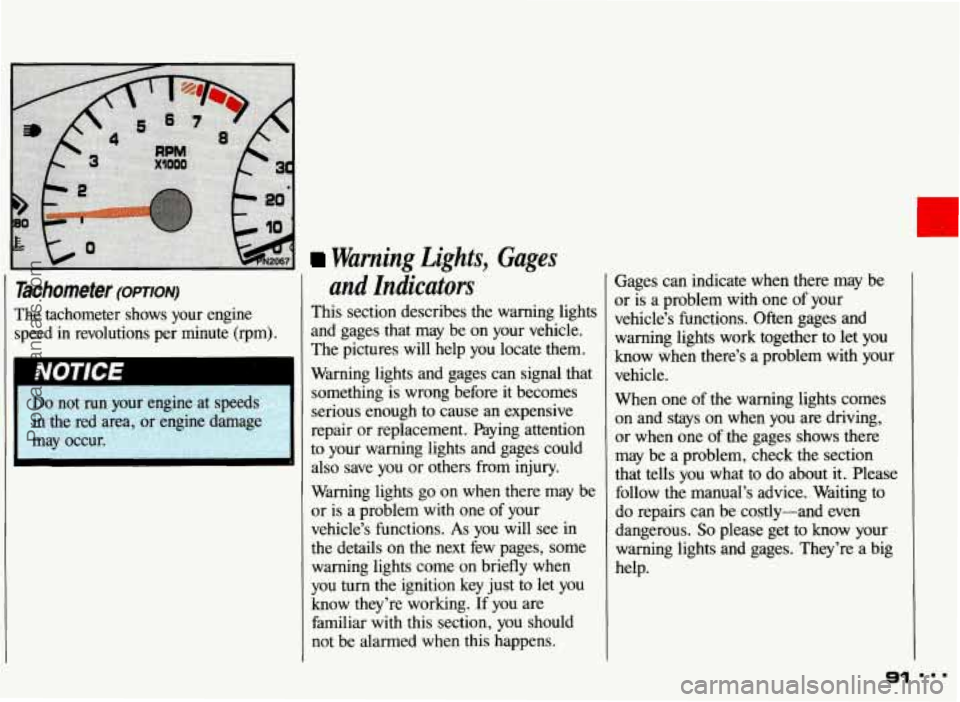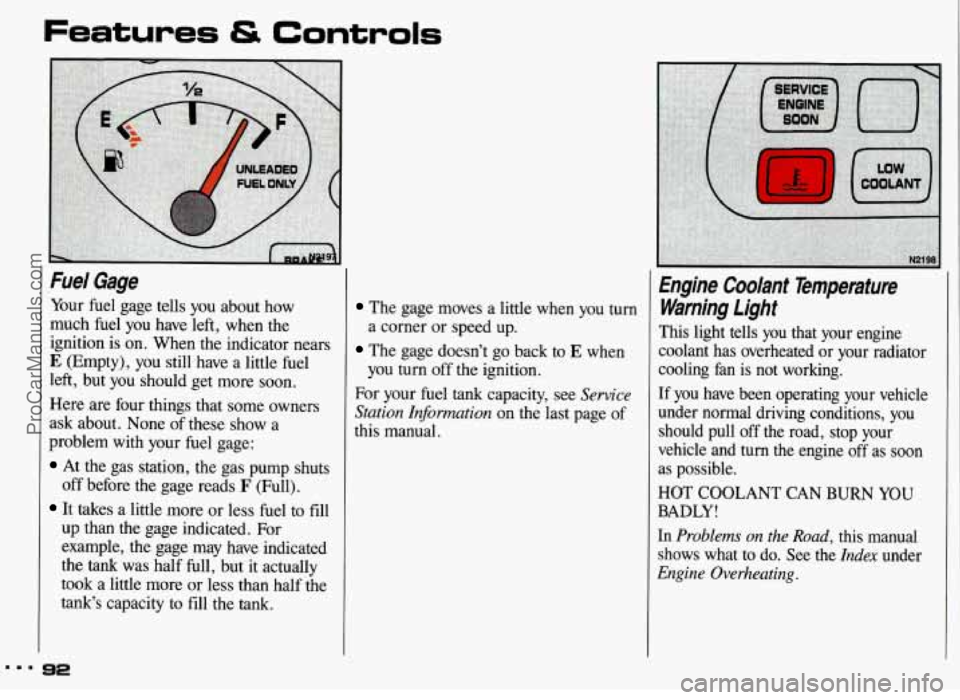Page 79 of 306

Features & Controls
Trunk Light
This light comes on when you open
your trunk. It also comes on when you
open the doors or turn on the courtesy
lights.
78
Battery Rundown Protection
Your Pontiac is equipped with a Battery
Rundown Protection feature designed to
protect your vehicle’s battery.
When any interior light (trunk, reading,
footwell or glove box) is left on when
the ignition is turned off, the Battery
Rundown Protection system will
automatically shut the light off after
20
minutes. This will avoid draining the
battery.
To reactivate the interior lights, either:
The ignition must be turned on
The activated light switch must be
turned off and then on, OR
A front door must be opened. The Battery Rundown Protection feature
will
also be activated when any door of
your vehicle is left open.
Also,
if your vehicle is left with the
ignition turned
off for over 24 days,
battery power to your clock and audio
system will be turned off to reduce
battery drain. When the ignition is
turned on again, battery power will
be
resupplied. However, under these
conditions, it will be necessary to reset
the clock and audio system settings.
ProCarManuals.com
Page 81 of 306

Features & Controls
Gontrolled-Cycle Windshield Wipers
(OPTION)
If your vehicle has controlled-cycle
wipers, you can set the wiper speed as
slow as
25 seconds between wiper
cycles, or faster. The controlled-cycle
delay is very useful in light rain or
snow.
Move the stalk to
DELAY, then rotate
the inner band and choose the delay
you
want. Rotate the inner band up for
shorter delay times between wiper
cycles. Rotate the band down for a
longer delay time between wiper cycles.
With controlled-cycle wipers you can
also use
MIST for a single wiper cycle.
Windshield Washer
Standard Wipers:
To wash your windshield, pull the stalk
labeled
a toward you until the
washers begin. When you release the
stalk, the washers will stop, but the
wipers will keep going
in LO until you
move the stalk to OFF.
Controlled-Cycle Wipers:
*.-.
If you have controlled-cycle wipers,
after each wash cycle ends the wipers
will resume the delay speed you were
using before. If you had no speed
selected, the wipers will stop.
I”
I , * Driving without washer fluid
- b can be dangerous. A bad
mud splash can block your
vision. You could hit another
vehicle or go off the mad. Cheek
your washer fluid level often.
9 In freezing weather, don’t lase
pur washer until the windshield
is warmed. otherwise the
washer fluid can form ice on the
windshield, blocking your
vision.
8.. %O
ProCarManuals.com
Page 82 of 306
could damage the tank if it is
completely full
Don’t use radiator antifreeze in
your windshield washer. It can
damage your washer system and
paint
r
Inside Manual DayINight
Rearview Mirror
To reduce glare from lights behind you,
pull the lever toward you
to the night
position.
.. . I
I
Convex Outside Mirror
Your right side mirror is convex.
A convex mirror’s surface is curved so
you can see more from the driver’s seat.
If you aren’t used to a convex
4 mirror, you can hit another
vehicle. A convex mirror can make
things (like other
vehicles) look
farther away
than they really are. If
you cut too sharply into the right
lane, you could hit a vehicle on
your right. Check your inside
mirror or glance
over your .
shoulder before changing lanes.
81
ProCarManuals.com
Page 86 of 306
Ashtray and Lighter
Lift the cover to reveal the ashtray.
To clean the ashtray, lift it out by pulling
up on the snuffer.
You can also use this tray as a cup
holder.
Don’t put papers and other things
that burn into your ashtrays.
If you
do, cigarettes or other smoking
materials could set them on fire,
causing damage.
To use the lighter, just push it in all the
way and let go. When it’s ready, it will
pop back by itself.
Don’t hold a cigarette lighter in
with your hand while it is heating.
If you do, it won’t be able to back
away from the heating element
when it’s ready. That can make it
overheat, damaging the lighter and
the heating element.
Sunglasses Stonge
Place your sunglasses in the open area
located above you
in the overhead
console.
85 ..I
ProCarManuals.com
Page 88 of 306
The lnstrument Panel-
bur Information System
Your instrument panel is designed to let
you know at a glance how your vehicle
is running. You’ll know how fast you’re going, how much fuel you’re using, and
many other things you’ll need to drive
safely and economically.
The main components
of your
instrument panel are:
1. Fog Light Switch
2. Instrument Panel Intensity
3. Side Vent
4. Turn SignaUHeadlight Beam Lever Control/Interior Lights Switch
5. Hazard Warning Flashers Switch
6. Instrument
Cluster
7. Windshield Wiper/Washer Stalk
8. Center Vent
9. Audio System
1 0. Side Vent
1 1. Side Window Defogger Vent
12. Glove Box
1 3. Climate Control System
14. Ashtray/Lighter
15. Gear Shift Lever
16. Rear Window Defogger (Option)
17. Ignition Switch
18. Horn
1 9. Tilt Steering Wheel Lever (Option)
20. Parking Brake Release Lever
21. Hood Release Handle
22. Fuse Panel
I
ProCarManuals.com
Page 89 of 306
Features & Controls
Instrument Panel Clusters
Your Pontiac is equipped with one of these instrument panel clusters, which
includes indicator warning lights and gages that are explained on the following
pages. Be sure to read about those that apply to the instrument panel cluster\
for
your vehicle.
Standard Cluster
N2191
ProCarManuals.com
Page 92 of 306

Warning Lights,
Gages
Tachometer (omtoN)
The tachometer shows your engine
speed in revolutions per minute (rpm).
and Indicators
This section describes the warning lights
and gages that may be on your vehicle.
The pictures will help you locate them.
Warning lights and gages can signal that something is wrong before it becomes
serious enough to cause
an expensive
repair or replacement. Paying attention
to your warning
lights and gages could
also save you or others from injury.
Warning lights go on when there may be
or is a problem with one of your
vehicle’s functions.
As you will see in
the details on the next few pages, some
warning lights come on briefly when
you turn the ignition key just to let you
know they’re working. If you are
familiar with this section, you should
not be alarmed when this happens. Gages can indicate
when there
may be
or is a problem with one of your
vehicle’s functions. Often gages and warning lights work together to let you
know when there’s
a problem with your
vehicle.
When one of the warning lights comes
on and stays
on when you are driving,
or when one of the gages shows there
may
be a problem, check the section
that tells you what to do about it. Please
follow the manual’s advice. Waiting to
do repairs can be costly-and even
dangerous.
So please get to know your
warning lights and gages. They’re a big
help.
91
ProCarManuals.com
Page 93 of 306

Fuel Gage
Your fuel gage tells you about how
much fuel you have left, when the
ignition is on. When the indicator nears
E (Empty), you still have a little fuel
left, but you should get more soon.
Here are four things that some owners
ask about. None
of these show a
problem with
your fuel gage:
At the gas station, the gas pump shuts
off before the gage reads
F (Full).
It takes a little more or less fuel to fill
up than the gage indicated. For
example, the gage may have indicated
the
tank was half full, but it actually
took a little more or less than half the
tank’s capacity to fill the tank.
The gage moves a little when you turn
The gage doesn’t go back to E when
For your fuel tank capacity, see
Service
Station Information
on the last page of
this manual. a
corner or speed up.
you turn off the ignition.
Engine Coolant Temperature
Warning Light
This light tells you that your engine
coolant has overheated or your radiator
cooling fan is not working.
If you have been operating your vehicle
under normal driving conditions, you
should pull off the road, stop your
vehicle and turn the engine
off as soon
as possible.
HOT
COOLANT CAN BURN YOU
BADLY!
In Problems on the Road, this manual
shows what to do. See the
Index under
Engine Overheating.
ProCarManuals.com